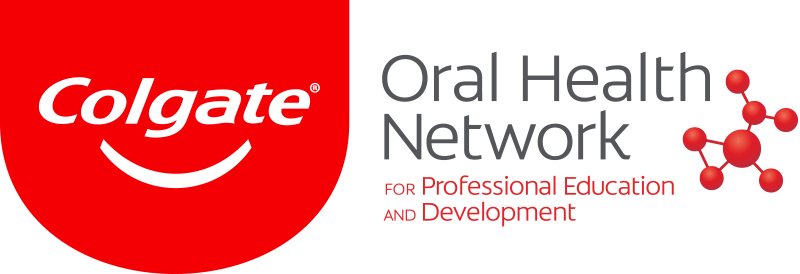NEW YORK, N.Y., USA: Preoperative planning and positioning are essential steps to avoid complications for the dental implant patients, such as damage to the mental nerve. A new study compares the results of technologies for locating and measuring the anterior loop of the mental nerve with actual anatomic measurements on human cadavers.
A study reported in the Journal of Oral Implantology used three methods to measure the anterior loop of the mental nerve on 12 human cadavers — cone beam computerized tomography (CBCT), a three-dimensional stereolithographic model (STL), and anatomy.
The mental nerve follows a looping course around the jaw, communicates with the facial nerve and provides sensory innervation to areas of the chin and lower lip. Injury to the anterior loop of the mental nerve can cause sensory disturbance, most notably numbness or altered sensory perception.
Reports on the length and location of the mental nerve vary widely between patients. One study found the anterior loop in 28 percent of the patients. However, another study reported it to be present 88 percent of the time. Some clinicians recommend maintaining a safety margin of 1 mm between implants and the nerve, others suggest as much as a 6-mm distance.
Because of conflicting reports, a variety of methods have been used to detect and measure the anterior loop. It has been determined that panoramic and periapical radiographs do not provide information about the loop that is reliable enough for clinicians to use in placing implants. This study seeks to determine the accuracy of CBCT and STL in identifying and measuring the anterior loop.
The CBCT was found to be accurate and reliable; however, the STL was found to significantly both overestimate and underestimate the anterior loop. Thus, the authors make the following recommendations:
- CBCT should be a prerequisite in identifying and measuring the anterior loop of the mental nerve for implant surgery.
- A fixed distance from the mental foramen (the point in the jaw where the nerve passes through) should not be used as a safety guideline; rather, the anterior loop itself should be located.
- A safety distance of at least 2 mm from the anterior-most portion of the loop should be observed in implant placement.
- The STL model should be used with caution; at this time, the model has not been shown to be highly accurate in estimating the anterior loop.
Full text of the article, “Accuracy of Cone Beam Computerized Tomography and a Three-Dimensional Stereolithographic Model in Identifying the Anterior Loop of the Mental Nerve: A Study on Cadavers,” Journal of Oral Implantology, Vol. 38, No.6, 2012, is available at http://www.joionline.org/doi/full/10.1563/AAID-JOI-D-11-00130.
(Source: Journal of Oral Implantology)
MIAMI, FL, USA: The principal oral care researcher worldwide for Procter&Gamble, Dr Robert Gerlach, gave a conference at the IADR 87th Session in Miami ...
Since 2000, more than 6 million robotic-assisted surgeries have taken place across multiple medical specialties, including cardiovascular, neurology and ...
Implants are making news on a global scale. According to The Wall Street Journal’s Market Watch, the implant market “is mainly driven by the ...
One of the major goals orthodontists try to achieve with every patient is to obtain ideal angulations and positions of all teeth at the end of active ...
For over 35 years, CEREC has been the go-to solution for the fabrication of high-quality restorations in the dental practice, offering the speed and ...
SACRAMENTO, Calif., USA: As summer comes to an end and the school year begins, with it come popular fall sports and other outdoor activities. The California...
BOSTON, Mass., USA: Organizers of the 2014 Yankee Dental Congress invite dental professionals to join 28,000 fellow professionals from Jan. 29 to Feb. 2 at ...
When dental implants are inserted, saliva or blood plasma immediately coat them. The implants adsorb a thin layer of proteins from these fluids that help ...
The ICOI Winter Implant Symposium is under way, and this year it’s all taking place virtually. With a few clicks of your mouse, you can find a variety of ...
WESTCHESTER, IL, USA: According to new research that received the Graduate Student Research Award at the 19th Annual Meeting of the American Academy of ...
Live webinar
Fri. 26 April 2024
12:00 PM EST (New York)
Live webinar
Mon. 29 April 2024
12:30 PM EST (New York)
Prof. Roland Frankenberger Univ.-Prof. Dr. med. dent.
Live webinar
Tue. 30 April 2024
1:00 PM EST (New York)
Live webinar
Fri. 3 May 2024
1:00 PM EST (New York)
Live webinar
Tue. 7 May 2024
8:00 PM EST (New York)
Live webinar
Thu. 9 May 2024
8:00 PM EST (New York)
Live webinar
Mon. 13 May 2024
1:00 PM EST (New York)
Doc. MUDr. Eva Kovaľová PhD.



 Austria / Österreich
Austria / Österreich
 Bosnia and Herzegovina / Босна и Херцеговина
Bosnia and Herzegovina / Босна и Херцеговина
 Bulgaria / България
Bulgaria / България
 Croatia / Hrvatska
Croatia / Hrvatska
 Czech Republic & Slovakia / Česká republika & Slovensko
Czech Republic & Slovakia / Česká republika & Slovensko
 France / France
France / France
 Germany / Deutschland
Germany / Deutschland
 Greece / ΕΛΛΑΔΑ
Greece / ΕΛΛΑΔΑ
 Italy / Italia
Italy / Italia
 Netherlands / Nederland
Netherlands / Nederland
 Nordic / Nordic
Nordic / Nordic
 Poland / Polska
Poland / Polska
 Portugal / Portugal
Portugal / Portugal
 Romania & Moldova / România & Moldova
Romania & Moldova / România & Moldova
 Slovenia / Slovenija
Slovenia / Slovenija
 Serbia & Montenegro / Србија и Црна Гора
Serbia & Montenegro / Србија и Црна Гора
 Spain / España
Spain / España
 Switzerland / Schweiz
Switzerland / Schweiz
 Turkey / Türkiye
Turkey / Türkiye
 UK & Ireland / UK & Ireland
UK & Ireland / UK & Ireland
 International / International
International / International
 Brazil / Brasil
Brazil / Brasil
 Canada / Canada
Canada / Canada
 Latin America / Latinoamérica
Latin America / Latinoamérica
 China / 中国
China / 中国
 India / भारत गणराज्य
India / भारत गणराज्य
 Japan / 日本
Japan / 日本
 Pakistan / Pākistān
Pakistan / Pākistān
 Vietnam / Việt Nam
Vietnam / Việt Nam
 ASEAN / ASEAN
ASEAN / ASEAN
 Israel / מְדִינַת יִשְׂרָאֵל
Israel / מְדִינַת יִשְׂרָאֵל
 Algeria, Morocco & Tunisia / الجزائر والمغرب وتونس
Algeria, Morocco & Tunisia / الجزائر والمغرب وتونس
 Middle East / Middle East
Middle East / Middle East
:sharpen(level=0):output(format=jpeg)/up/dt/2024/04/Envista-names-Paul-Keel-new-CEO-1.jpg)
:sharpen(level=0):output(format=jpeg)/up/dt/2024/02/vVARDIS_article_1920x1080px.jpg)
:sharpen(level=0):output(format=jpeg)/up/dt/2024/04/Study-links-e-cigarette-use-with-increased-risk-of-heart-failure.jpg)
:sharpen(level=0):output(format=jpeg)/up/dt/2024/04/web_FDC_small.jpg)
:sharpen(level=0):output(format=jpeg)/up/dt/2024/04/web_Bassi.jpg)








:sharpen(level=0):output(format=png)/up/dt/2013/03/LM-Dental.png)
:sharpen(level=0):output(format=png)/up/dt/2014/02/A-dec.png)
:sharpen(level=0):output(format=png)/up/dt/2014/02/3shape.png)
:sharpen(level=0):output(format=png)/up/dt/2011/11/ITI-LOGO.png)
:sharpen(level=0):output(format=png)/up/dt/2022/01/Sprintray_Logo_2506x700.png)
:sharpen(level=0):output(format=png)/up/dt/2014/02/MIS.png)
:sharpen(level=0):output(format=jpeg)/up/dt/e-papers/330729/1.jpg)
:sharpen(level=0):output(format=jpeg)/up/dt/e-papers/330727/1.jpg)
:sharpen(level=0):output(format=jpeg)/up/dt/e-papers/330725/1.jpg)
:sharpen(level=0):output(format=jpeg)/up/dt/e-papers/325039/1.jpg)
:sharpen(level=0):output(format=jpeg)/up/dt/e-papers/325007/1.jpg)
:sharpen(level=0):output(format=jpeg)/up/dt/e-papers/313543/1.jpg)
:sharpen(level=0):output(format=jpeg)/up/dt/2017/01/b0b99224c95a0d1cb26495070084b743.jpg)

:sharpen(level=0):output(format=jpeg)/up/dt/2024/04/Envista-names-Paul-Keel-new-CEO-1.jpg)
:sharpen(level=0):output(format=gif)/wp-content/themes/dt/images/dt-user.gif)
:sharpen(level=0):output(format=jpeg)/up/dt/2017/01/386b6ee22e0e703f969b8cba4a213b86.jpg)
:sharpen(level=0):output(format=jpeg)/up/dt/2020/10/00_00_yomi-1188x668-.jpg)
:sharpen(level=0):output(format=jpeg)/up/dt/2017/01/51e44530126da53c2dc9280c36b5b6b2.jpg)
:sharpen(level=0):output(format=jpeg)/up/dt/2013/08/6aabe127fa4711ab8e6e0c2c5d22a168.jpg)
:sharpen(level=0):output(format=jpeg)/up/dt/2023/07/CER-image-CEREC-Primemill-Patient-1920x1080-1.jpg)
:sharpen(level=0):output(format=jpeg)/up/dt/2017/01/8aacc36d5a48db3a6786c8c5b1ae1662.jpg)
:sharpen(level=0):output(format=jpeg)/up/dt/2017/01/52c156e463af99b4da86bdaded0995f9.jpg)
:sharpen(level=0):output(format=jpeg)/up/dt/2022/03/00_U_Buffalo_bacteria_Study.jpg)
:sharpen(level=0):output(format=jpeg)/up/dt/2021/02/00_BusyHalls.jpg)
:sharpen(level=0):output(format=jpeg)/up/dt/2010/06/a5aef08cca25ff59c7e7b71a03a510a6.jpg)






:sharpen(level=0):output(format=jpeg)/up/dt/2024/04/Envista-names-Paul-Keel-new-CEO-1.jpg)
:sharpen(level=0):output(format=jpeg)/up/dt/2024/02/vVARDIS_article_1920x1080px.jpg)
:sharpen(level=0):output(format=jpeg)/up/dt/2024/04/Study-links-e-cigarette-use-with-increased-risk-of-heart-failure.jpg)
:sharpen(level=0):output(format=jpeg)/up/dt/e-papers/330727/1.jpg)
:sharpen(level=0):output(format=jpeg)/up/dt/e-papers/330725/1.jpg)
:sharpen(level=0):output(format=jpeg)/up/dt/e-papers/325039/1.jpg)
:sharpen(level=0):output(format=jpeg)/up/dt/e-papers/325007/1.jpg)
:sharpen(level=0):output(format=jpeg)/up/dt/e-papers/313543/1.jpg)
:sharpen(level=0):output(format=jpeg)/up/dt/e-papers/330729/1.jpg)
:sharpen(level=0):output(format=jpeg)/up/dt/e-papers/330729/2.jpg)
:sharpen(level=0):output(format=jpeg)/wp-content/themes/dt/images/3dprinting-banner.jpg)
:sharpen(level=0):output(format=jpeg)/wp-content/themes/dt/images/aligners-banner.jpg)
:sharpen(level=0):output(format=jpeg)/wp-content/themes/dt/images/covid-banner.jpg)
:sharpen(level=0):output(format=jpeg)/wp-content/themes/dt/images/roots-banner-2024.jpg)
To post a reply please login or register